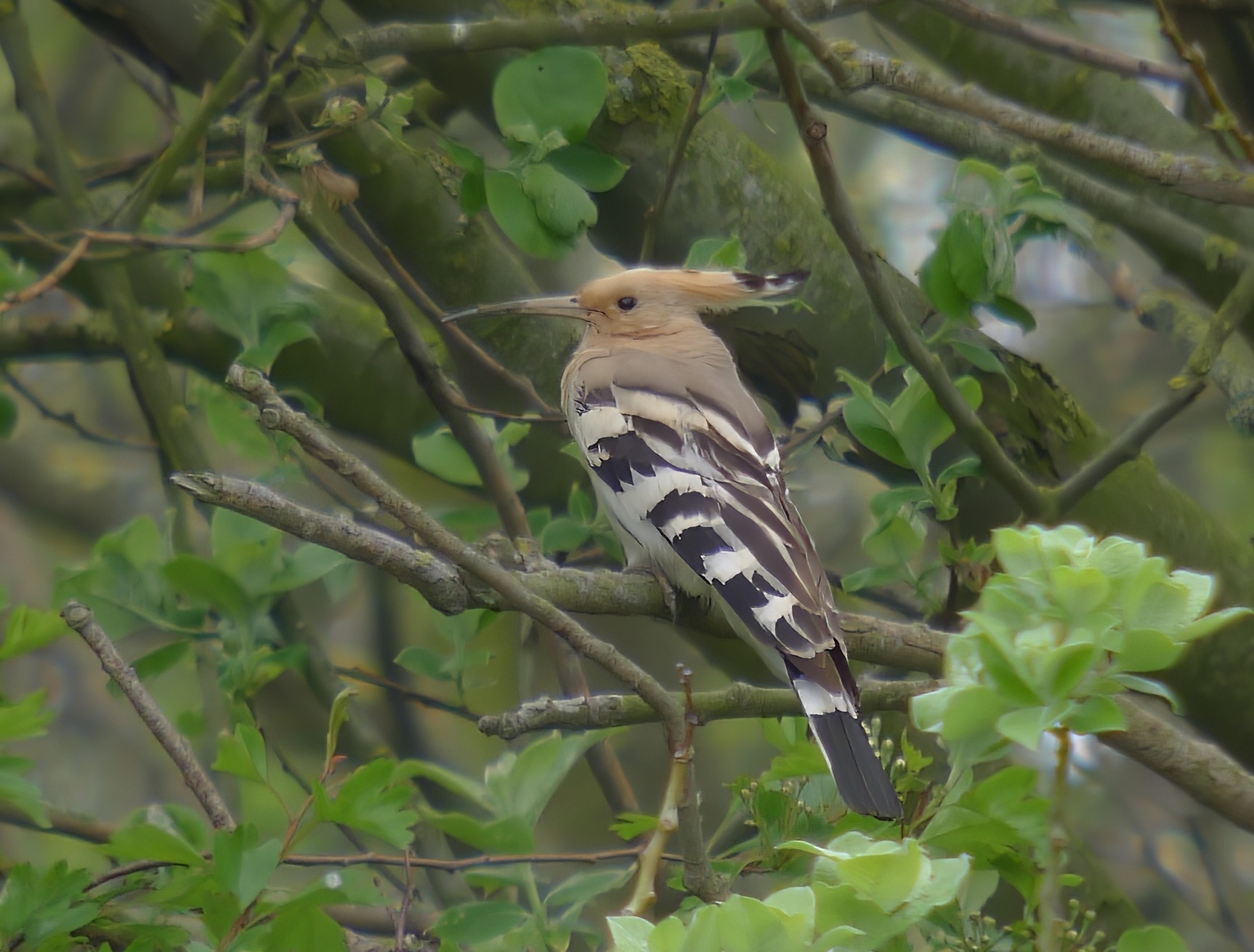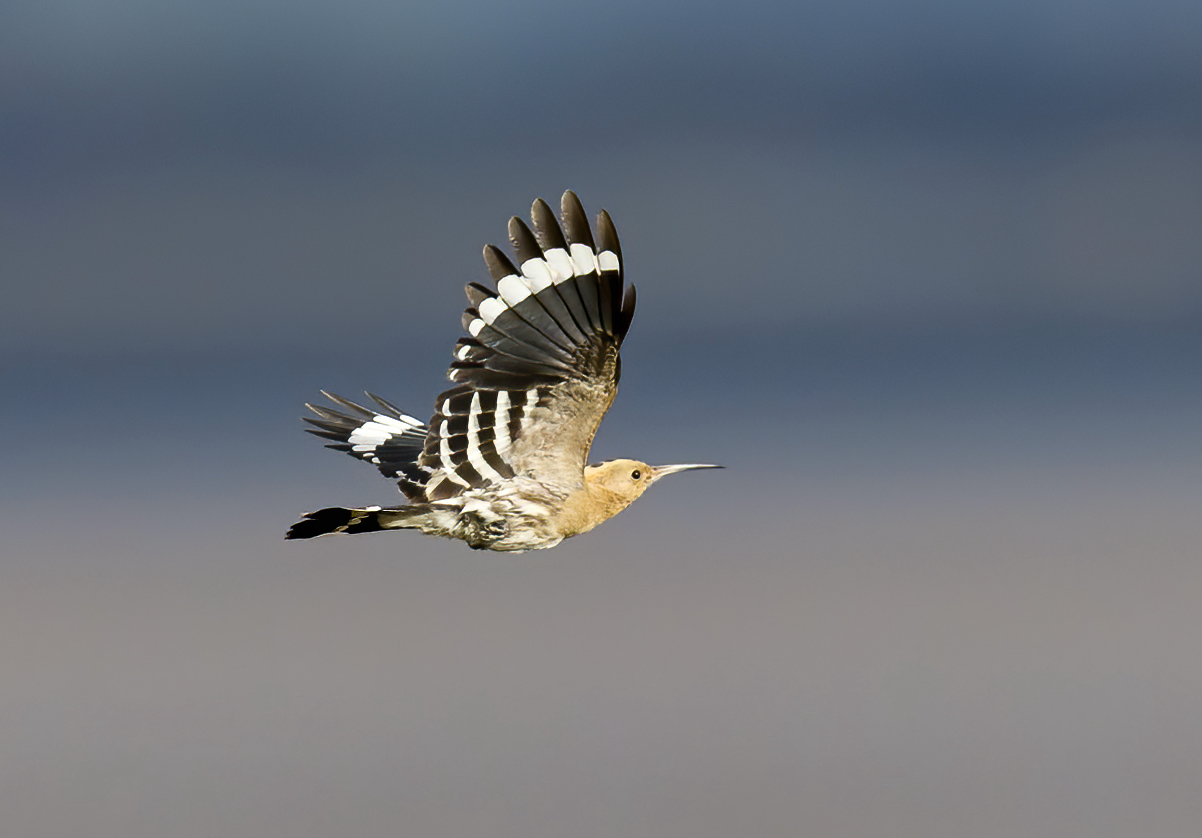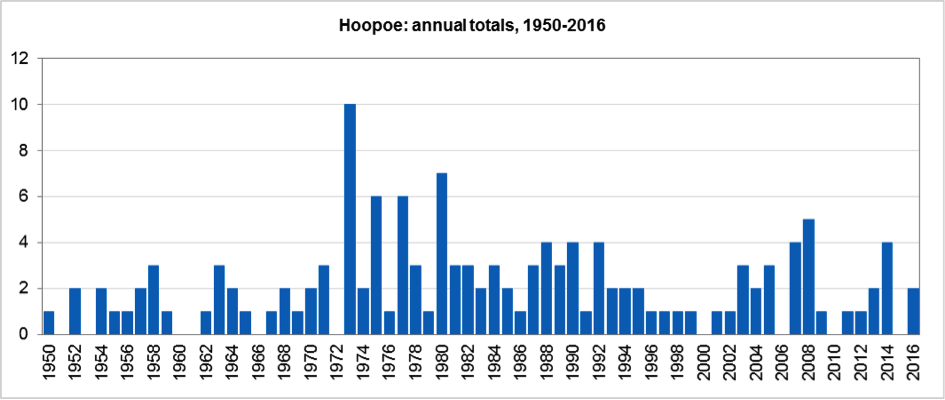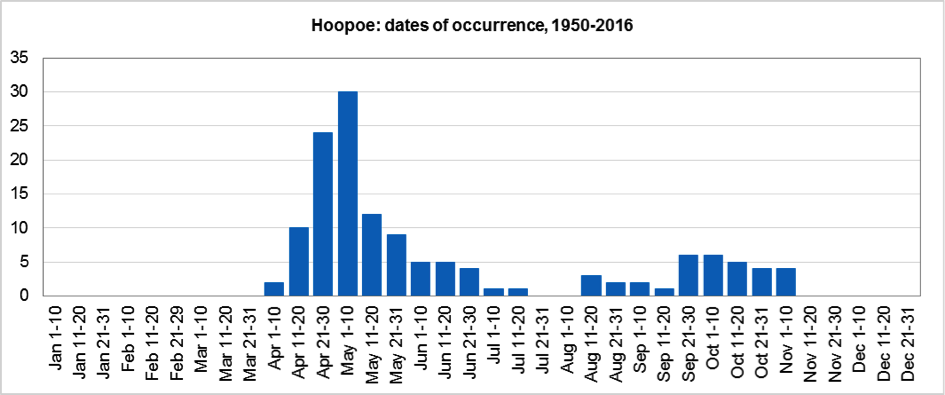Hoopoe Upupa epops


Lorand and Atkin (1989) noted that historically there have been around 125 records of Hoopoe in the county up to that date. Since then, birds have continued to occur in regular but small numbers, mainly on the coast but also at inland locations, often in private gardens where they are usually noticed probing for invertebrates on areas of lawn. The majority (77 or 56%) of the 138 birds recorded during 1950-2016 were on or close to the coast, between Grimsby and Gibraltar Point. One or two Hoopoes per year was the average number found during 2000-2019, although in the 1970s and 1980s there were years when they were more frequent and the average in those decades was 3.25 per year. They are more common in spring than in autumn. Analysis of all records since 1950 shows a most occur April 21st-May 10th with the spring peak being the first 10 days of May. There is a long tail-off through June and into the first half of July with no records between July 13th-August 15th. The extreme arrival dates since 1950 are April 9th 1958 (Denton) and November 11th 2008 (North Somercotes). The autumn occurrences are spread over a much wider date range with fewer birds. Four birds in 2007 and 2014 and five in 2008 being the most recorded since 2000. Most records have been of single birds but two have been seen together in 1957, 1977 and 1980, all on the coast in spring; there has been no suggestion of any breeding attempts.


References
Cordeaux, J. (1872) Birds of the Humber District. John Van Voorst, London.
Cordeaux, J. (1899) A List of the British Birds belonging to the Humber District. R.H. Porter, London.
Smith, A.E. and Cornwallis, R.K. (1955) The Birds of Lincolnshire. Lincolnshire Naturalists’ Union, Lincoln.
(Account prepared October 2017; updated with reference to the new Birds of Lincolnshire (2021), included October 2022)

